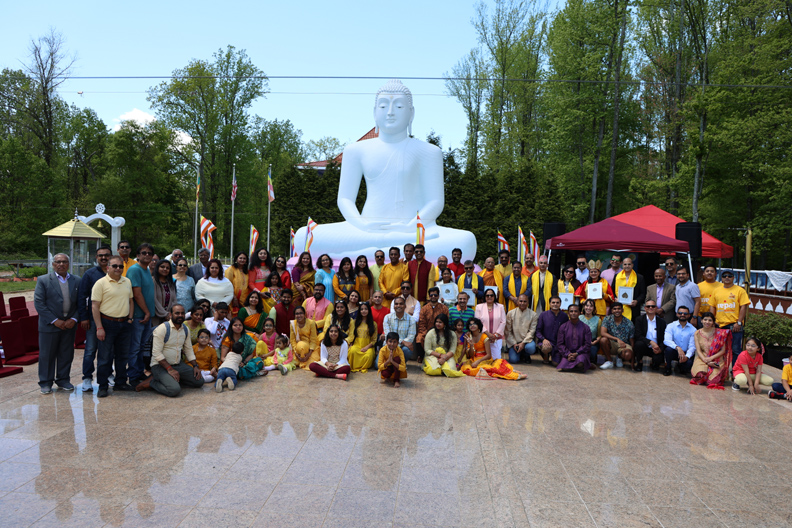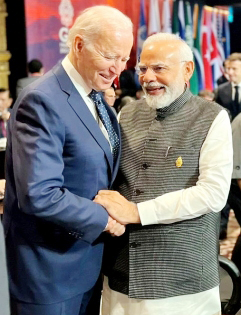
Children orphaned by COVID
The second wave of COVID-19 brought with it unimaginable grief, agony, and frustration. India saw a sharp increase in the number of deaths, especially among younger people, which meant that many children lost one or both parents. Reports of people seeking help for orphaned children as well as requests to ‘adopt’ these children emerged on social media. Data collected and presented by the National Commission for Protection of Child Rights in the Supreme Court as of June 8th, 2021 revealed that COVID-19 left 3,621 children orphaned. Additionally, more than 26,000 children lost one of their parents and 274 children were abandoned. These numbers, which are likely to be higher, indicate grave protection-related issues for children.
To address this emerging child rights issue, the central government and various state governments announced social protection packages for children orphaned due to COVID-19. These packages mainly include cash transfers (different governments have designed various modalities) and concessions with a preference for the education of children who have been orphaned. Some packages also include health insurance and employment assurance upon completion of education. Though timely, there is a conscious need to design, allocate, and implement these schemes using a child-sensitive lens that responds to gender and age-appropriate needs.
Securing rights for domestic workers
The global COVID-19 pandemic has brought many lives to a standstill. In addition to grave health repercussions, it has resulted in a deluge of socio-economic and humanitarian suffering due to lockdowns and restrictions aimed at curbing transmission. As policymakers grapple with these conflicting pressures, millions of informal workers—domestic workers included—have faced tremendous uncertainty with regard to their work and income. Despite an easing of lockdown restrictions across India after the first wave, 45 percent of domestic workers faced some form of job loss. From those who managed to keep their jobs, many had to accept lower wages and faced working conditions fraught with health and safety risks.
By definition, informal workers are susceptible to exploitation due to the absence of work security and social security. However, within this subset, domestic workers fare far worse than their counterparts in construction work and street vending who benefit from protective legislation. Consequently, street vendors and construction workers significantly out-earn domestic workers in both rural and urban contexts.
In fact, domestic workers were revealed to be the lowest paid amongst all the informal trades studied by WIEGO. This is despite the immense scale of the domestic work sector. Official estimates suggest that there are 4.75 million domestic workers in India; but this is likely to be a gross under-estimation and the real number is actually closer to 50 million. Moreover, domestic work is a trade dominated by vulnerable individuals such as women—who constitute 80 percent of domestic workers globally—and also includes minors.
Gender inequities prevail in vaccination drive
Just over 20 percent of India’s adult population has received their first COVID-19 vaccine dose. During the rollout, clear gender disparities have emerged, and these are of concern for the coming months. In a recent map released by Ashoka University, only around 86 women are receiving vaccine doses for every 100 men. According to data from the government’s CoWIN dashboard, in only three states—Chhattisgarh, Himachal Pradesh, and Kerala—are women currently receiving an equal or higher number of vaccine shots compared to men. Union territories including Dadra and Nagar Haveli, Daman and Diu, Jammu and Kashmir, and Chandigarh are the worst-performing regions on vaccine gender parity. As the vaccination programme begins in rural areas, addressing this gender gap early is a priority.
In the initial days of the vaccine rollout, women made up the majority of vaccine recipients given that many frontline jobs are performed by women. In March 2021, when vaccines became available to those over 45 years of age, and then in May 2021 to those between ages 18 to 44 years, the numbers began reversing, with more men being vaccinated than women. In April alone, 2.4 million fewer women than men received a vaccination.
India’s COVID-19 response limited by strong urban and tech bias
Economist Jayati Ghosh analyses how the response strategy during the first wave of the COVID-19 crisis utterly neglected the plight of people from marginalised sections of society. She underlines that the policy actions—ranging from the lockdowns to the economic relief packages—were devised with a parochial view, relying on limited sources of information. Reference points for policymaking were starkly ignorant of ground realities. As a result, these measures disproportionately affected women, people belonging to the working class, and marginalised caste communities. Also, the economic relief packages during these distressing times increased the liquidity in the markets instead of improving the buying capacity of the poor. As a result, the low-income groups and labour-intensive sectors of the economy couldn’t be rescued from the crisis.
Steps such as nationwide lockdowns were made with an assumption that all families across the country live in nicely-built houses and maintain enough savings to survive for days even in the absence of livelihood opportunities. Or, that homes are ‘safe’ for all people, ignoring ground realities about homes as sites of violence, especially for women and queer people. No wonder then that such measures led to widespread exclusions and added to the innumerable agonies among the weaker sections of society.
Relief measures and cash transfers, according to Gram Vaani’s research, were designed to rule out ‘inclusion errors’ rather than to prevent vulnerable people from falling through the cracks. This has led to significant exclusion. Other measures, such as ramming through the new labour and farm laws, were designed to benefit corporates, the formal economy, and the upper section of the society.
Indian achievements that helped push technological boundaries the world over
Thanks to the talent and infrastructure in our country, today, India is among the topmost countries in the world in the field of scientific research.
There are so many technological achievements that every Indian should feel proud about.
- Development of an atomic clock has made ISRO one of the few space organisations in the world to have gained this sophisticated technology.
ISRO has developed an atomic clock that will be used in navigation satellites to measure precise location data. The space agency currently imports atomic clocks from European aerospace manufacturer Astrium.
- A team of Indian astronomers has discovered an extremely large supercluster of galaxies.
This is one of the largest known structures in the neighbourhood of the universe – as big as 20 million billion suns. It is a path-breaking discovery and the cluster has been named ‘Saraswati’.
- ISRO demonstrated its capability of handling complex missions by successfully launching a record 104 satellites on a single rocket.
This is the highest number of satellites ever launched in a single mission by any other country in the world.
- ISRO launched the country’s heaviest rocket GSLV-Mk III whose cryogenic engine was developed indigenously.
The rocket is described as a “game-changer” in the first of its kind space mission and is yet another major step towards being self reliant in the country’s space programme.
- Rifath Sharook, an 18-year-old from Karur in Tamil Nadu, scripted history by designing the world’s smallest satellite.
The tiny 3D-printed satellite is called Kalamsat, after former President Abdul Kalam, and was flown by NASA into space in one of its missions.
- PARAM – India’s first ever indigenous supercomputer was a major milestone in modern India’s technological journey.
India faced a technology-denial regime in the 80s. It was then that the Centre for Development of Advanced Computing (C-DAC) was set up with the clear mandate to develop an indigenous supercomputer to meet high-speed computational needs.
- Aryabhatta – the first unmanned satellite built by India was a breakthrough achievement in India’s space programme.
Aryabhata was built by the Indian Space Research Organization to conduct experiments in X-ray astronomy, aeronomics, and solar physics and opened new possibilities for ISRO.
- India developed an indigenous seeker for Brahmos for the first time.
Brahmos is the world’s fastest and most formidable anti-ship cruise missile. This marks a big achievement and breakthrough for the supersonic missile as this is the first time the country has developed a seeker for a missile of this calibre and class.
- The Mars Orbiter Mission made India the only nation in the world to reach Mars in its first attempt.
Mangalyaan-1, the indigenously built space probe marked India’s first venture into the interplanetary space. It also made India first in Asia, and fourth in the world to reach the surface of Mars.
- Chandrayaan-1, India’s first lunar exploration mission, made it possible for ISRO to go beyond the Geostationary Orbit.
With this mission, India emerged as the fourth country in the world to hoist its flag on a lunar surface. It also provided the needed thrust to basic science and engineering research in the country.
- ISRO successfully test-fired its Scramjet Rocket Engine, a breakthrough technology in air-breathing propulsion.
Air-breathing rocket systems use atmospheric oxygen from their surroundings, burn it with the stored fuel to produce a forward thrust in contrast to the conventional chemical rocket systems which carry both the oxygen and the fuel. The development of this high-technology system will go a big way in meeting India’s futuristic space transportation needs.
- Space Capsule Recovery Experiment Mission established India’s technological capability to recover an orbiting satellite.
It was a remarkable achievement and the technology will now be used to develop recovery technologies for future human and robotic missions.
- The successful demonstration of the use of cryogenic engine technology put India among a league of only five other such nations.
With the successful launch of GSLV-D5, India has gained the capability to launch heavy satellites without foreign assistance. It will also pave way for sizeable savings for the country’s future launch costs.
- India’s INSAT system is one of the largest domestic communication satellite systems owned by any country in the Asia-Pacific region.
It initiated a major revolution in India’s communications sector. At present, it is serving several crucial sectors of our economy, including telecommunication, education, and meteorology.
- Indian Regional Navigation Satellite System (IRNSS) helped India realize its dream of having an independent satellite navigation capability.
It has freed India from its dependence on navigation satellite systems operated by other countries. By all means, a home grown GPS system like IRNSS could serve as a strategic asset of tremendous significance for the military too.





Be the first to comment